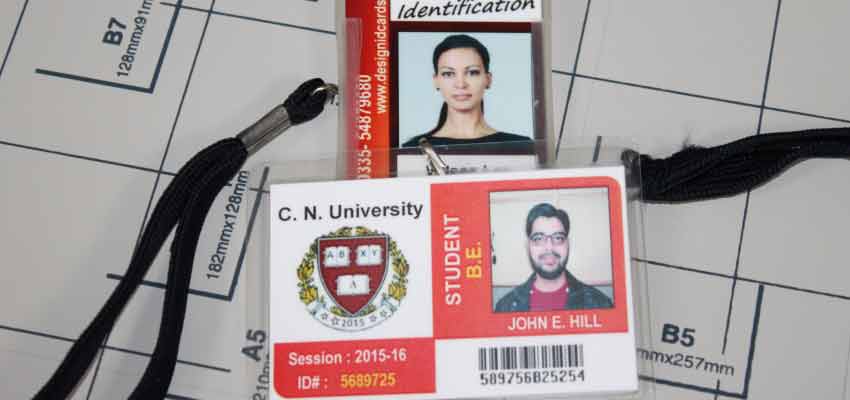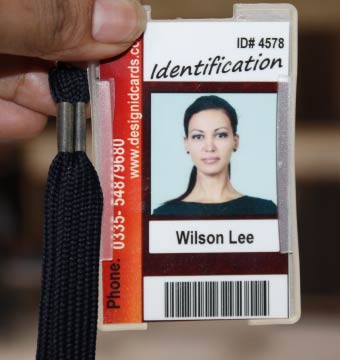The Printing Options for Student ID Cards
When it comes to printing options for student ID cards, several methods and technologies are available. The choice of printing method depends on factors such as budget, quantity, desired features, and security requirements. Here are some of the commonly used printing options for student ID cards:

-
Direct-to-Card Printing (DTC): This method uses a direct printing process where the design and information are printed directly onto the surface of the ID card. DTC printing is suitable for producing ID cards in small to medium quantities. It offers full-color printing capabilities, allowing for vibrant designs and high-resolution images. DTC printers use dye-sublimation or thermal transfer printing technologies to achieve excellent print quality.
-
Retransfer Printing: Retransfer printing is a two-step process that involves printing the card design onto a clear film, which is then thermally bonded to the surface of the ID card. This method offers superior print quality and durability, making it ideal for high-resolution images, intricate designs, and ID cards that need to withstand frequent use or harsh conditions. Retransfer printers are often more expensive than DTC printers but provide greater flexibility and security features.
-
Inkjet Printing: Inkjet printing technology is commonly used for printing documents, and it can also be employed for student ID cards. Inkjet printers use tiny droplets of ink to create the desired image on the card surface. While inkjet printing may not offer the same level of durability as DTC or retransfer printing, it can be a cost-effective solution for printing basic ID cards with limited color options.
-
Laser Engraving: Laser engraving is a process that uses lasers to etch or engrave information onto the surface of the ID card. This method provides a highly secure and tamper-resistant solution, as the information becomes a permanent part of the card material. Laser-engraved ID cards are often used when a higher level of security is required, such as in educational institutions or government facilities. However, laser engraving is generally more expensive and time-consuming than other printing methods.
-
Holographic Printing: Holographic printing incorporates holographic elements into the design of the ID card, adding an additional layer of security and visual appeal. This method involves using special printing techniques to create holographic images, patterns, or overlays on the card surface. Holographic printing can help prevent counterfeiting and enhance the authenticity of the ID card.
-
Variable Data Printing: Variable data printing allows for the personalization of each student ID card by printing unique information on each card, such as the student's name, photo, ID number, and other details. This printing option is often used in conjunction with DTC or retransfer printing methods to add individualized information to pre-printed card templates.
The Security Features can be added to Student ID Cards
Student ID cards can incorporate various security features to enhance their authenticity and prevent counterfeiting. These security features can be both overt (visible to the naked eye) and covert (requiring special tools or techniques for detection). Here are some commonly used security features for student ID cards:
-
01 Holograms:
Holographic overlays or patches can be added to ID cards to provide a visually striking and difficult-to-replicate security feature. Holograms are created using specialized printing techniques and can include elements like 3D images, microtext, or intricate patterns. They are highly effective in deterring counterfeiters.
-
02 UV Printing:
Invisible UV (ultraviolet) printing involves using special inks that are invisible under normal lighting conditions but become visible when exposed to ultraviolet light. This feature can include hidden text, images, or patterns that are only visible under UV light, making it easy to authenticate the card.
-
03 Holographic Foil Stamping:
Holographic foil stamping is a process that applies a foil layer with holographic properties onto specific areas of the student ID card. The holographic foil can feature different patterns, logos, as well as customized designs, providing an additional layer of security against the counterfeiting.
-
04 Microprinting:
Microprinting involves printing extremely small text or images that are difficult to reproduce accurately. Microprinted elements are often placed in specific areas of the card, such as the edges or background patterns. To the naked eye, microprinting appears as a solid line. This feature helps verify the authenticity of the ID card.
-
05 Embedded Security Threads or Fibers:
Thin security threads or fibers can be embedded into the ID card during the manufacturing process. These threads are visible when held up to light and are challenging to replicate. They can be incorporated into the card's design or run through specific elements, such as the cardholder's photo or a school logo.
-
06 Guilloche Patterns:
Guilloche patterns are intricate and repetitive designs created by overlapping or interweaving thin lines or curves. These type of patterns are challenging to reproduce accurately and are often used as a background or border element on student ID cards to enhance the security as well as privacy.
-
07 Smart Chips or RFID Technology:
Smart chips or radio frequency identification (RFID) can be embedded into ID cards to store and transmit data wirelessly. These chips can store encrypted information such as biometric data, adding an extra layer of security and enabling multifunctional capabilities, such as access control or cashless payment.
-
08 Tamper-Evident Features:
Tamper-evident features are designed to show visible signs of tampering or alteration. For example, cards can include a holographic or color-shifting laminate that shows "VOID" or other indicators when peeled or tampered with. This helps prevent the unauthorized transfer or alteration of ID cards.
-
09 Barcodes or QR Codes:
Barcodes or Quick Response (QR) codes can be printed on the student ID cards to encode various information such as student IDs, access codes, or other relevant data. Scanning the barcode or QR code with a reader or mobile device can quickly verify the card's authenticity and retrieve the associated information.
Ensuring for Student ID Card Complies with Industry Standards
To ensure that your student ID card complies with industry standards, you should follow these steps:

-
Research Industry Standards:
Start by researching the industry standards and guidelines relevant to student ID cards. Look for standards set by organizations such as the International Organization for Standardization (ISO), the American National Standards Institute (ANSI), or other regulatory bodies specific to your region or educational sector. These standards often provide specifications for card design, dimensions, security features, and data encoding.
-
Consult with Relevant Authorities:
Reach out to the relevant authorities or departments within your educational institution or organization responsible for issuing ID cards. They may have specific guidelines or requirements in place to ensure compliance with industry standards. Seek their guidance and clarification on the standards you need to meet.
-
Identify Required Data Elements:
Determine the mandatory data elements that should be included on the student ID card based on industry standards and institutional requirements. This typically includes information such as the student's name, ID number, photo, date of birth, program or course details, and any other relevant data.
-
Select Appropriate Card Technology:
Assess the technology options available for encoding data on the ID card. Common options include magnetic stripes, barcodes, QR codes, proximity cards, or smart chips with RFID capabilities. Choose the technology that aligns with industry standards and meets the functional requirements of your institution, such as access control or cashless payment.
-
Design Card Layout and Security Features:
Create a card layout that incorporates the necessary data elements and complies with industry standards. Pay attention to security features, such as holograms, UV printing, microprinting, or tamper-evident elements, based on the security recommendations outlined in the standards. Ensure that the design is visually appealing, user-friendly, and easily distinguishable from counterfeit cards.
-
Choose Accredited Printing Service Providers:
Select printing service providers that adhere to industry standards and have a track record of producing high-quality ID cards. Look for providers who have certifications or accreditations related to card printing, such as ISO 9001 (Quality Management System) or ISO 27001 (Information Security Management System). Review samples of their work and inquire about the printing technologies and security features they employ.
-
Quality Assurance and Testing:
Implement a quality assurance process to verify that the produced ID cards meet the required standards. This may involve conducting sample testing, comparing the cards against the design specifications, and ensuring that all security features are functional and aligned correctly. Regularly review and update your quality assurance procedures to stay up to date with evolving industry standards.
-
Periodic Review and Compliance Updates:
Stay informed about any updates or changes to industry standards. Regularly review your student ID card design, technology, and security measures to ensure ongoing compliance. Attend conferences, seminars, or webinars related to ID card standards to stay abreast of best practices and emerging trends.
By following these steps, you can ensure that your student ID card aligns with industry standards, enhances security, and meets the requirements of your educational institution or organization.